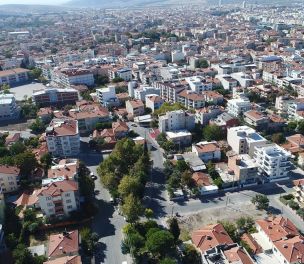Photo: Dejan Krsmanovic / Flickr
Click to read the article in Turkish
The average household size showed a tendency to decrease by declining from 3.69 persons in 2012 to 3.35 persons in 2019, according to figures released by the Turkish Statistical Institute (TurkStat), the country's statistical authority.
On the other hand, the number of one-person households has been increasing since 2014. While the proportion of one-person households was 13.9 percent in 2014, it rose to 16.9 percent in 2019.
The province which had the highest proportion of one-person households was Dersim in southeast Turkey with 26.4 percent. The province which had the lowest proportion of one-person households was Diyarbakır, also in the southeast, with 9.4 percent.
 Household sizes per years
Household sizes per years
As the proportion of extended-family households, which are defined as households with at least one nuclear family and non-family members, declined from 16.7 percent in 2014 to 15 percent.
The figures show that 26.9 percent of the extended-family households have an income below the poverty threshold. The percentage of individuals who have an income below the threshold was 21.8 in 2018.

Meanwhile, the proportion of multi-person no-family households increased from 2.1 percent to 3 percent.
The percentage of households with a single parent and at least one child was 9.2 in the last year. Among the parents, 2 percent were fathers and 7.2 percent were mothers.
According to the results of 2018 household budget survey, expenditures on housing and rent had the highest share in total consumption expenditures with a rate of 23.7 percent, expenditures on food and non-alcoholic beverages took the second place with 20.3 percent and expenditures on transportation took the third place with 18.3 percent in the country.
According to the results of income and living conditions survey; 59.0 percent of the individuals were owners of the houses they reside in and 25.2 percent were tenants in their residence.
It was observed that 39.6 percent of individuals experienced a heating problem due to isolation, 36.2 percent of individuals had leaking roofs, damp walls and rotten window frame problems, etc. and 24.8 percent of them experienced air pollution, environmental pollution or other environmental problems caused by traffic or industry in 2018. (HA/VK)





